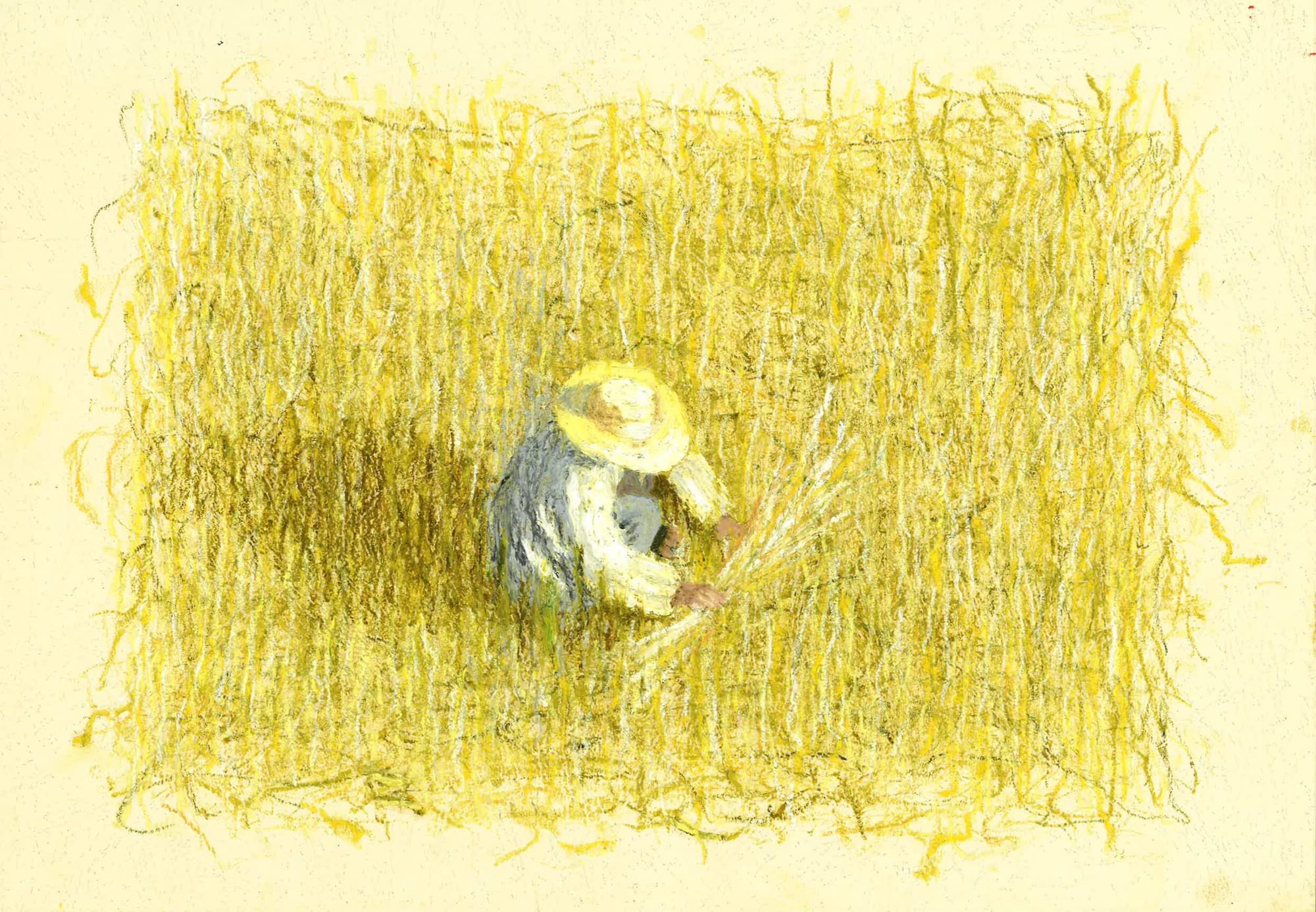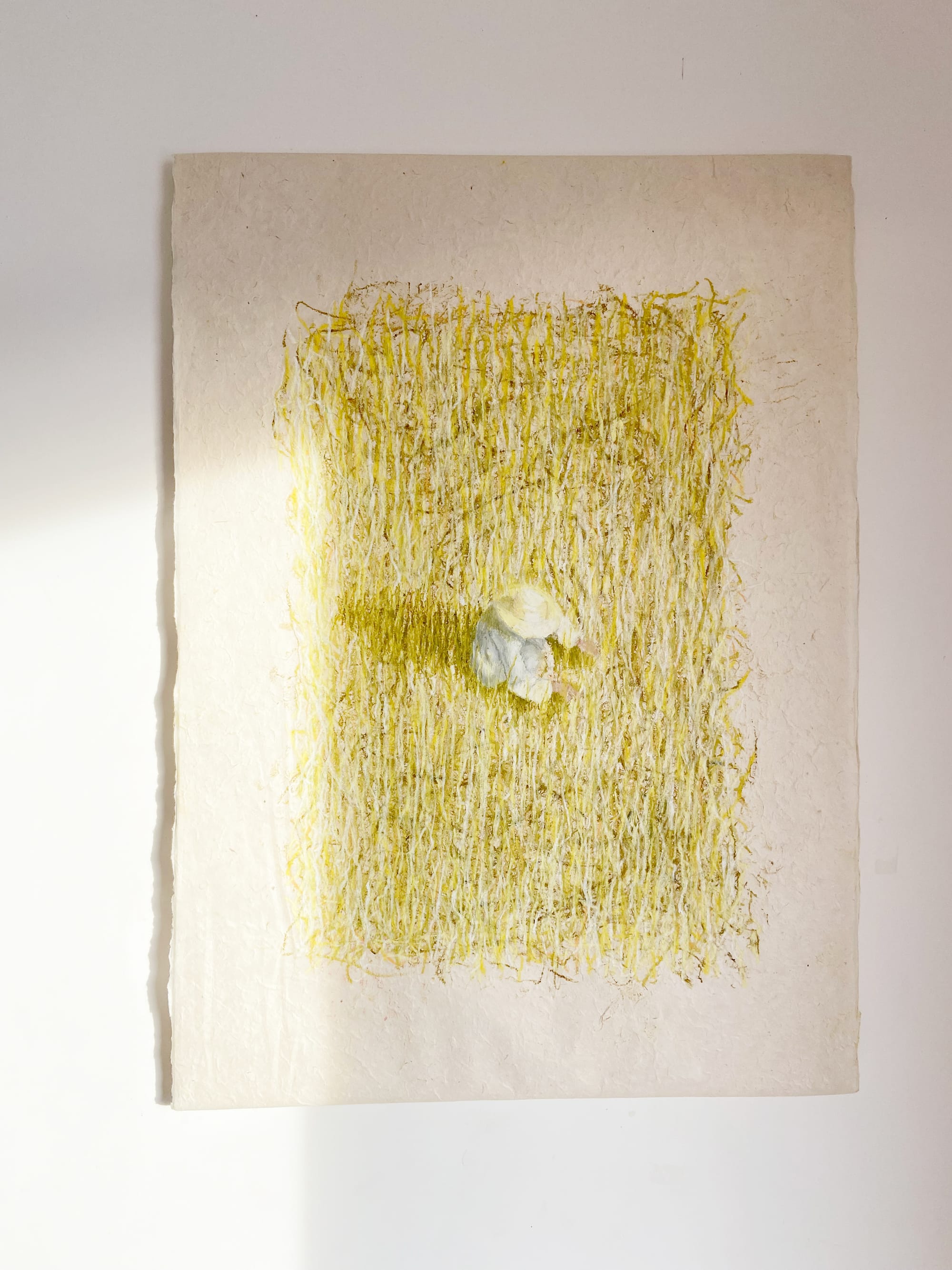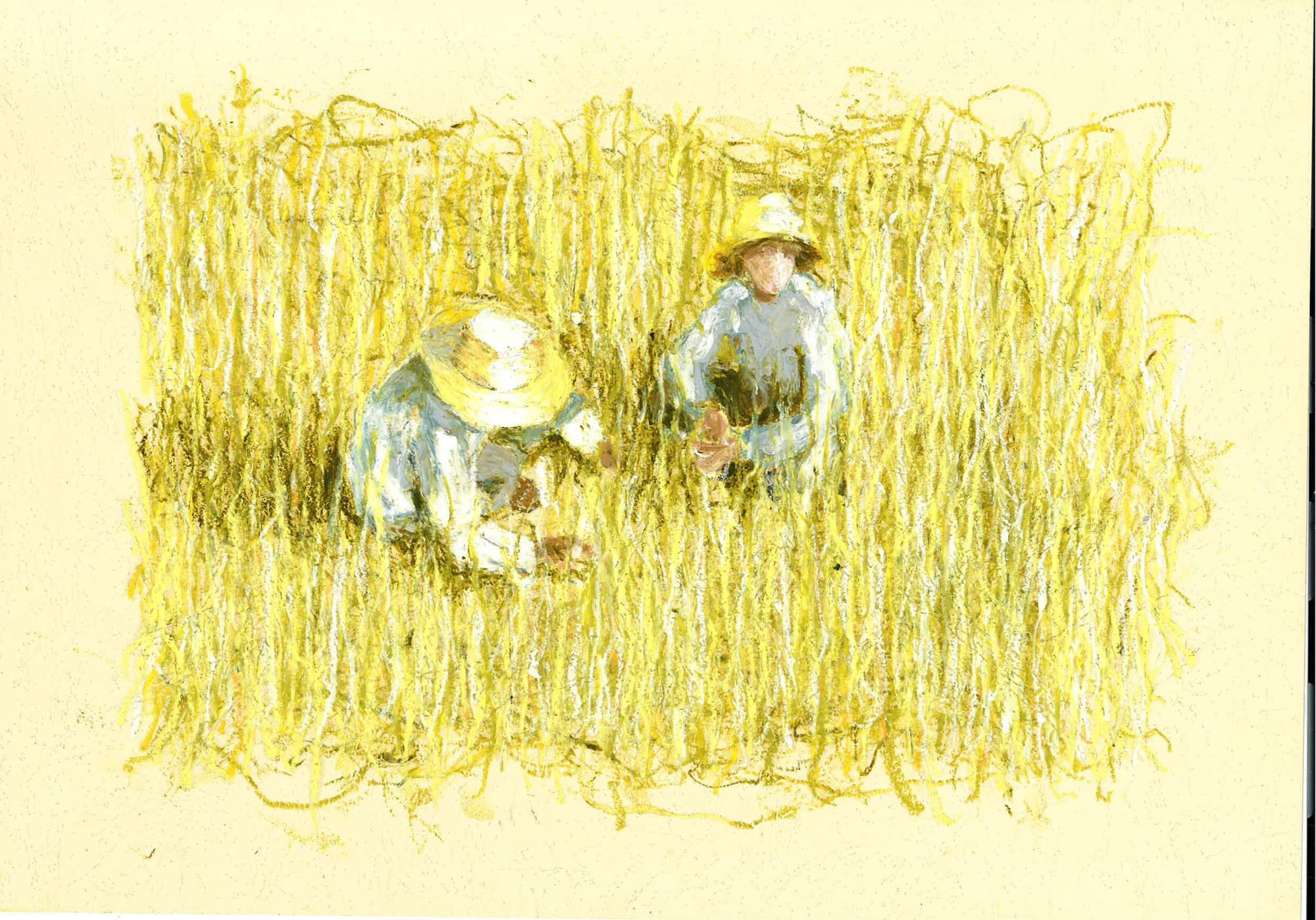This Artist's Work is a Tribute To Morocco's Countryside


Between Paris and Marrakech lives and works an artist whose pastels feel like a whispered memory: raw, textured, and deeply human. His name is Ismail (1997): an architect by training, and a self-taught artist by heart. His work is a tribute to the Moroccan countryside and the people who live and work in it.
“I don’t just want to show a landscape,” Ismail explains. “I try to capture the deep connection between people and the land.”
Ismail’s path to art is hybrid. While he studied architecture at ENSA Paris-La Villette, his artistic voice developed outside traditional frameworks, driven by emotion, memory, and instinct. Over the past year, he has embraced oil pastels as his main medium, drawn to their raw texture and ability to express light in an organic way.
His visual world is grounded in daily Moroccan life, especially rural scenes: farmers bent over in the fields, quiet gestures, sun-soaked landscapes. There is no spectacle, no grandeur. And yet, in this simplicity, he finds profound beauty.
“The rural world draws me in with its raw truth,” he says.
“It’s a world of honest labor and essential gestures, where every silence holds meaning.”
This choice is not just aesthetic, it’s personal. Ismail’s work is filled with echoes of childhood visits to the Moroccan countryside. He remembers the soft light, the rhythm of working hands, and the calm of wide-open spaces. These memories are not just part of his past, they’ve become the soul of his art.
In many of his drawings, human figures blur into the natural environment. Limbs blend with leaves, bodies dissolve into earth. This fusion is intentional: “It’s not about erasing people,” he explains, “but showing their unity with nature. Humans aren’t above the land: we are in constant dialogue with it.”
More than anything, Ismail’s work is an act of homage. A quiet celebration of a way of life that is often overlooked. A visual love letter to those who work the land with strength, dignity, and silence.
“My work is a tribute,” he says. “To a culture, to the land, and to the people who dedicate their lives to it.”
In a world that often chases speed and spectacle, Ismail invites us to slow down and to see the quiet beauty of the everyday.








